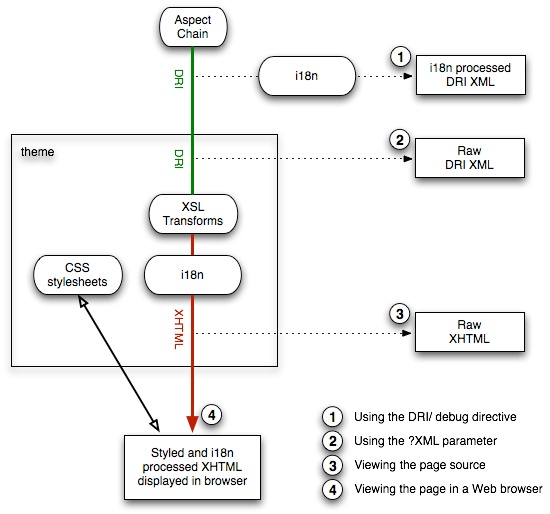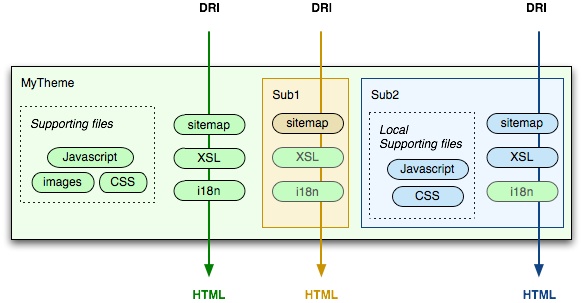Page History
...
Theme development in Manakin does not explicitly require use any specific tools or IDEs. Both XSL and CSS can be read and edited through a plain-text editor like Notepad or vi. However, the use of a specialized editor can make development considerably easier, especially when trying to debug erroneous behavior. It is also useful to know the various stages that DSpace pages go through before they are rendered on screen and being able to look at the intermediate results of those stages. The Manakin theme application process can be illustrated with the following diagram:
!<a href=!onetheme.jpg"/>
Getting at the raw XML
...
In general, there is nothing preventing you from separating all the sub-themes into their own top-level directories, while still reusing components between them. Just as most themes import dri2xhtml.xsl, so can all themes use each other's XSL, CSS, images, and other supporting files. However, doing so creates strong coupling between themes that is not visible at a glance. If one of the themes is changed or removed, the effect will quietly propagate to other themes, potentially causing problems. Combining like themes together is a good alternative.
!<a href=!twotheme.jpg"/>
Compound themes consist of a primary theme that defines all the main features and behaviors and any number of sub-themes that live in the same directory, using the primary theme's resources and overriding them as needed. This allows for reuse of resources and also works to keep all related themes together in one place.
...
A very simple gocha that is bound to get any developer working with XML at least once is the single restriction XML places on its comments. In XML (and therefore XSL) syntax, comments as designated by the pair <!-- comments -->. The character sequence – (dash dash) cannot appear inside the XML comment section and its inclusion will throw an error. Some processors do not explicitly report the exact line where the offending character sequence occurs, instead pointing the developer to the beginning or the end of the entire comment block. In general, if you are getting a malformed XML error somewhere in the comment block, a simple string search for a double dash should fix the problem.
...

